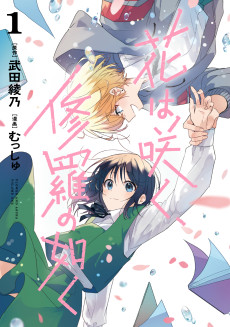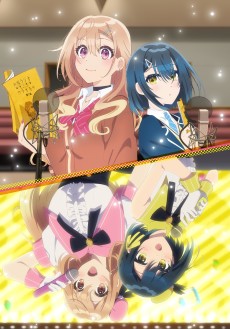HANA WA SAKU, SHURA NO GOTOKU
STATUS
COMPLETE
EPISODES
12
RELEASE
March 26, 2025
LENGTH
23 min
DESCRIPTION
On the picturesque island of Tonakijima with a population of only 600, Hana’s favorite pastime is reading literature to the island’s children. Her narration skills are second to none, and Mizuki, the president of the school’s broadcasting club immediately recognizes Hana’s ability to engage with others and draw them into her recitations. Invited by Mizuki to join the club, Hana embarks on a journey to discover her true love of reading — and maybe even change the course of her life along the way.
(Source: HIDIVE)
CAST
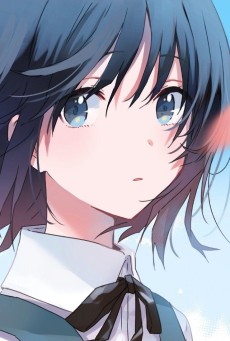
Hana Haruyama
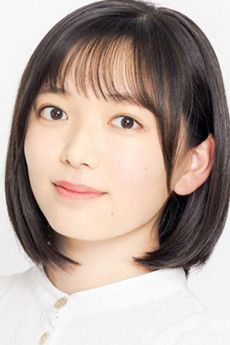
Minori Fujidera
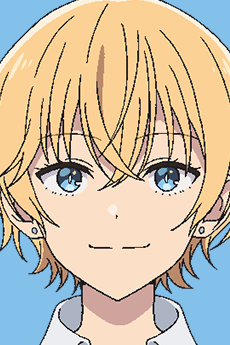
Mizuki Usurai
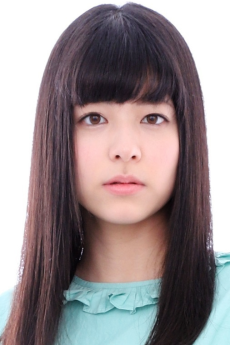
Miyuri Shimabukuro
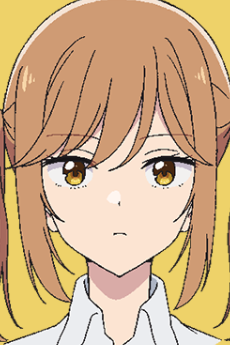
An Natsue
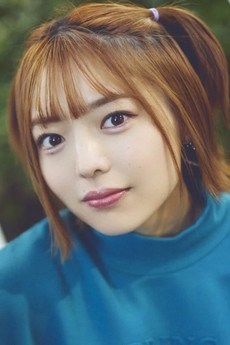
Fuuka Izumi
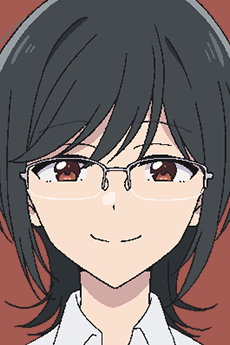
Ryouko Totonoi
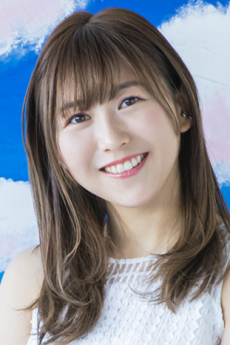
Kiyono Yasuno
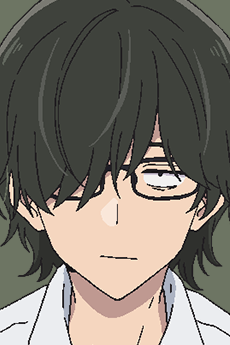
Setarou Hakoyama
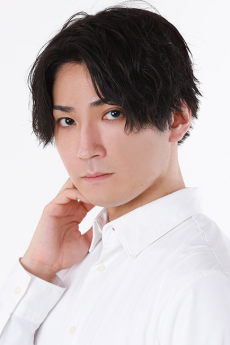
Taito Ban

Hiromi Kichijouji
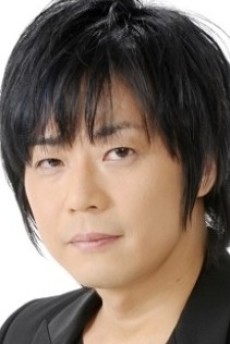
Kouji Yusa

Miiko Nekoi

Miyari Nemoto

Matsuyuki Akiyama
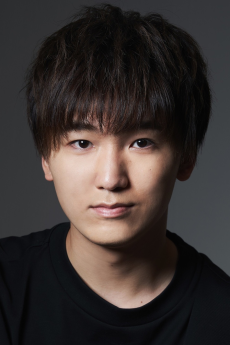
Seiichirou Yamashita
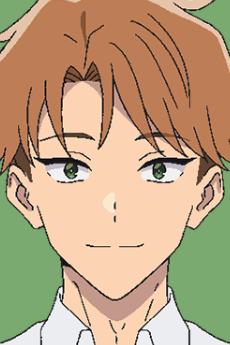
Shuudai Touga
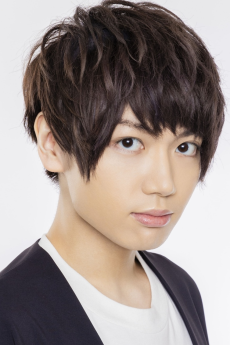
Shouya Chiba

Shura Saionji
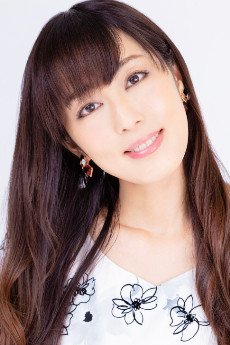
Youko Hikasa

Chiaki Hayashi
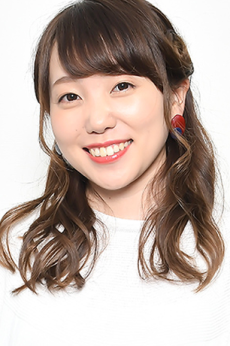
Konomi Kohara

Misaki Kumori
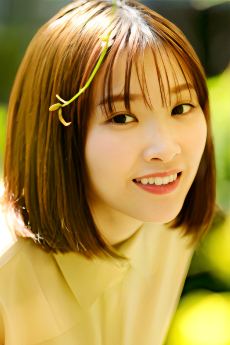
Kana Ichinose

Ichijiku Minohara
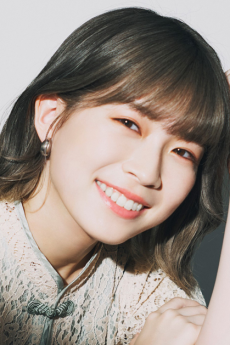
Yoshino Aoyama

Mitsuka Hiragidani
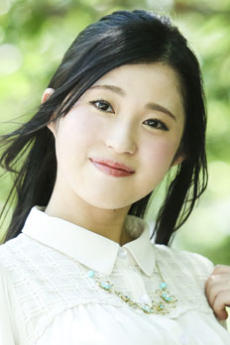
Akira Sekine

Ling Xiang

Aoi Koga

Pokoko Botanpoko
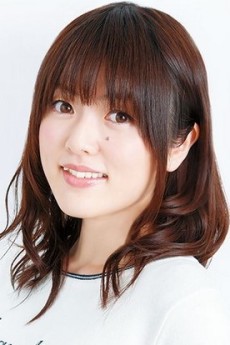
Ai Kakuma

Owari Konoyono
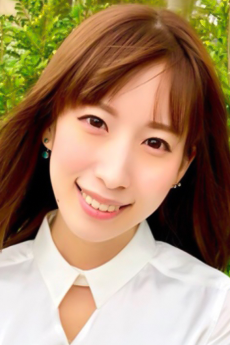
Ami Koshimizu

Rengo Nishino

Taihi Kimura
EPISODES
Dubbed
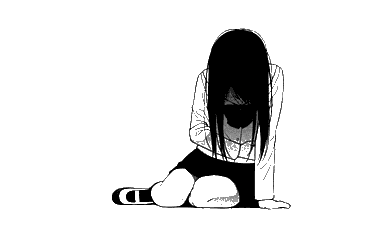
Not available on crunchyroll
RELATED TO HANA WA SAKU, SHURA NO GOTOKU
REVIEWS

Scheveningen
75/100A solid high school character drama about a compelling niche topic that is held back by its unambitious storytellingContinue on AniListAs far as high school dramas go, Hanashura is a solid entry into the genre but does not break much new ground beyond its choice of club activities. The introduction to the world of a school broadcasting club and their various activities is certainly compelling and has yet to be covered in much detail by an anime. Particularly engaging are the dramatic readings done by the various characters which take full advantage of anime as an audio-visual medium and the talents of its voice actors to deliver some impressive performances. However, it is hard for this single standout element, which partially relies on its novelty, to make a show exceptional. The characters and their arcs all draw from well-trodden themes and archetypes that, while still serviceable and interesting enough for most high school dramas, lack a particular spark in their execution to draw a viewer in. This is largely down to storytelling that often overprioritizes clarity to the point of being blunt or clumsy. Combined with a straightforward narrative structure that has most episodes covering only single plot threads or characters arcs at a time, it prevents an interesting buildup of tension or complexity throughout the season that would heighten the impact of its dramatic moments. Hanashura still makes for a compelling enough show despite this, but it feels distinctly held back by the various components of its story not supporting each other to bring out their full potential.
The primary distinguishing feature of Hanashura is of course it being a narrative centered around the activities of a broadcasting club, in particular focusing on recitations of literature as a performing art. It is a subject ripe for compelling interpersonal drama given the artistic yet competitive nature of recitations, while still leaving opportunities to explore group dynamics with club-wide activities like the making of a short television drama or running the school’s radio programme. The recitations are where Hanashura shows off much of its flair, leveraging skilled voice actors to deliver charismatic and captivating performances. This is further enhanced by the audio design and frequent animated visualization of the passages as they are being read, impressing upon the audience the impact of their delivery with how it succeeds at painting a vivid picture in the minds of the characters. While there are certainly powerful performances in the show that earn this level of elevated perspective such as the readings of An Asura in Spring and all of Youko Hikasa’s performances, this total visualization is employed so often that it loses some of its impact. Part of this is down to the show being a fairly direct adaptation of the manga, which understandably employs visualization frequently because they lack other means of conveying how gripping a recitation is. However, the use of this device in nearly every episode, sometimes for even minor recitations, creates the impression that characters are far too easily impressed or captivated, to the point of it feeling melodramatic.
Hanashura would have greatly benefitted from more subtle character reactions, be it in less overt facial expressions, or using only partial visualizations instead of being totally transported into a different scene. The latter option is already applied to a certain degree, with some recitations evoking more minor visuals like a rush of cherry blossoms into the room or the world taking on a blue tint instead of a complete change in environment. The issue is that this lesser level of captivation is barely utilized, with dramatic and total changes in a character’s surroundings during a recitation being predominant. This leads to the distinct impression that the narrative is failing to differentiate or highlight the skill or impact of its various dramatic readings. It makes the weaker recitations feel melodramatic or artificially propped up by exaggeration, and the stronger ones hard to identify unless a voice actor’s performance and the passage they were reading were stunning enough to speak volumes on their own. The use of famous literature was understandably more limited since Takeda likely wanted to avoid Hanashura being a primarily intertextual work that might be accused of relying too much on the greatness of others, while her own passages were also better able to serve the specific needs of her story. Even then, much of the impact of recitations often comes down to the quality of the writing itself, and it is hard for anyone to match up to passages taken from Heian period classics or writers in the modern Japanese canon like Kenji Miyazawa.
This bluntness is emblematic of a larger problem of Hanashura perhaps lacking confidence in being able to subtly convey its characterization or thematic conflict. Given that most of the characters fall into familiar archetypes, it ought to be easy to convey information indirectly since they all behave more or less as described on their metaphorical tins. However, the show feels the need to follow scenes that were already clear with their intentions by literally stating the motivations or feelings of a character. This occurs even in the first episode where our protagonist, Hana, is introduced. The show already opens by giving the audience a brief look into her past and what inspired her to pick up recitation. This is followed closely by Hana’s first interaction with the outgoing Mizuki which clearly demonstrates her more demure personality and uncertainty about joining the broadcasting club. It is a simple inference, if not already a clear point, that Hana lacks confidence in her abilities at recitation and is hesitant about subjecting a hobby she holds close to her heart to a formalized setting. Yet the show still feels a need to have her directly tell Mizuki what inspired her, not only repeating it to the audience almost immediately, but foregoing any interesting interactions that could have later coaxed Hana into revealing her motivations or examining the consequences of her sharing this information. Perhaps what is most regrettable is that Hanashura actually does a good job of conveying their characters’ intentions subtly and that much of this repetition was needless.
This pattern persists throughout most episodes of the show. Character introductions and the setup of various arcs are at first effectively conveyed through indirect means like mannerisms or reading the obvious between the lines of their dialogue, only to be immediately followed by scenes that repeat this information directly, removing opportunities to linger on interesting ambiguity or uncertainty in a character’s intent. This detracts from the writing quality in general, with much of this bluntness taking the form of characters literally announcing their feelings or stating the parts of their backstory that cause their current actions. Of course, these kinds of direct and cathartic moments can be appropriate or emotionally earned by the narrative, but the issue is that these scenes are employed from the very first episode while not justifying its direct and hasty approach with some later payoff. This contributes to the show not being able to hold or build up drama between episodes because most confrontations are also written in a similarly direct manner, leaving a total resolution that defuses most tension as the only outcome available. Each confrontation or moment of catharsis meant to end an episode or arc essentially renders much of the conflict developed in them resolved, keeping the overall tension of the season low since it is effectively being reset with each episode instead of built upon or intentionally being released at appropriate moments.
This general bluntness of the character writing is not helped by how the plot is structured, often tackling one character arc or plot thread at a time instead of simultaneously building them over multiple episodes. This is not to say that the show launches into dramatic twist or plot points without any set up, but that they are only foreshadowed in a very literal and mechanical sense. This is particularly the case with the plot arcs expanding on Mizuki and Akiyama’s characters, which are logical consequences or questions arising from their initial characterization but are not significantly built up to in the narrative before they come to the fore. It is a consequence of the show choosing to dedicate episodes to only a single narrative objective, such as in the earlier half of the season where they almost exclusively focus on Hana’s relationship with one other member of the club. What remains of the run time is rarely used for a meaningful set up of other arcs and is usually needed to explain the more technical elements of the plot like the competition’s format or some minor technical elements of recitation. Consequently, plot and character arcs feel like they are brought up and resolved within the same breath which robs the series of much of the tension it can build between episodes. Many of the cathartic and dramatic moments do not fully realize their potential because conflicts have not been given the time to develop or linger, all while the series as a whole feels as though it lacks a consistent throughline of tension despite it progressing towards the obvious narrative focal point of a competition.
The character arc most emblematic of this is Hana’s conflict with Natsue, which goes beyond a difference in personality as an ideological clash over the competitive aspect of recitations. Despite this being a fundamental theme for any show covering competition in artistic fields, much of this conflict is defused before the halfway mark of the season because it was one of the first issues tackled. To the show’s credit, not all the tension completely resolved going forward, and the show still does use the vestiges of this conflict to reinforce the pressure Hana is under in the lead up to the competition. But it is not leveraged near as much as it could be to build interpersonal stakes and tension on top of Hana’s internal doubt or struggles to give the series a sense of direction. What would have been an excellent conflict to develop bit by bit, each small clash tackling a new dimension of their differences before culminating in a confrontation right before the tournament, has essentially been resolved too early because the set up and payoff was done back-to-back in the first few episodes. All while a partial resolution that would preserve some of the conflict for later was impossible because the blunt writing has characters essentially give away the whole game at the first prompting. In this case, Natsue does not simply acknowledge Hana’s point or make some admission of harshness but goes on to explain her past experiences that created this outlook which could have easily been saved for later. This is particularly disappointing since the thematic conflict itself is interesting, with Hanashura deciding to view both the pragmatic approach to competition and being true to one’s self as being valid depending on what matters most to an individual. However, as it stands now, the exploration into how these opposing views can coexist and support each other has been left hanging for too long because the narrative shifted its almost singular focus on to other areas almost immediately after the confrontation.
This issue even extends into what could be described as “two-parters” where the immediate plot spans two episodes, such as the club working together to film a short TV drama and the joint practice session with the broadcasting clubs of other schools. While each of these plot arcs affect the story of two characters, they are tackled separately in each episode and resolved one after another instead of being built up concurrently in the first episode to both come to a head in the second. Again, there is not much pay off for this storytelling choice since neither arc gets the time it needs to breathe or develop while highlighting how potent a storytelling tool holding tension between episodes can be through its absence here. Despite both these two-parters being prime moments to explore the group dynamics between characters, it is still focused almost singularly on the character at hand and at most their tangential relationship with Hana. In particular, the practice session with other schools felt particularly egregious since it introduced new characters, arguably bloating the cast, while the show had yet to explore much of the group interactions within the club itself. While one of the new characters does immediately tie back to Natsue, and by extension her relationship with Hana’s, the set up for it is again only done in a technical sense with her presence having been mentioned indirectly in the story. There is little character or emotional foreshadowing for this arc, such as having a scene showing Natsue’s reluctance to go for this event to at least make it appear less contrived or pique the viewer’s interest in a more organic way. This approach to story structure is undoubtedly much easier since it neatly ties each episode to a specific overriding goal, and at the very least it makes it abundantly clear what the intentions of the characters and the narrative are, but it is hard to say it is anything beyond merely adequate, or even arguably being mediocre.
Overall, while Hanashura has outstanding moments of artistry and relatively interesting ideas on the thematic level, it is held back significantly by its storytelling and character writing not supporting its other elements to their full potential. Some of this blame must be laid on how the manga was written, which predisposed an adaptation to follow its story structure as the path of least resistance. Although it would have signaled some ambition to use this as an opportunity to radically retool things, that would likely have been expecting too much effort and would expose the adaptation to the new pitfall of potentially mutilating the story. All the building blocks of the story and characters are still solid, and it cannot be understated how impactful some of the recitations were, but these are all still elements operating in isolation. When it comes to forming a compelling and cohesive narrative, it is regrettably hard to say that Hanashura is more than a 7.5 out of 10; that extra edge being down how powerful some of the recitations were despite the show being hamstrung overall by its simplistic story structure and overly blunt character writing.
With there still being material to adapt for a second season, hopefully the narrative changing to focus squarely on the recitation competition will lead to improvements in its storytelling and writing since it is more suited to episodes with a singular focus.
SIMILAR ANIMES YOU MAY LIKE
 ANIME DramaHibike! Euphonium 3
ANIME DramaHibike! Euphonium 3 ANIME DramaHibike! Euphonium
ANIME DramaHibike! Euphonium ANIME DramaHibike! Euphonium 2
ANIME DramaHibike! Euphonium 2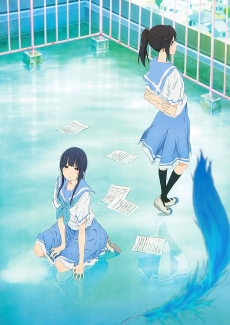 MOVIE DramaLiz to Aoi Tori
MOVIE DramaLiz to Aoi Tori ANIME Slice of LifeSorairo Utility (TV)
ANIME Slice of LifeSorairo Utility (TV)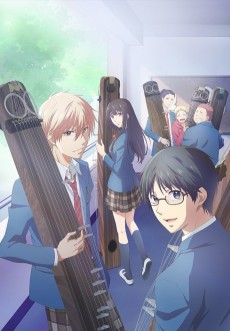 ANIME DramaKono Oto Tomare!
ANIME DramaKono Oto Tomare! ANIME Slice of LifeAkebi-chan no Sailor Fuku
ANIME Slice of LifeAkebi-chan no Sailor Fuku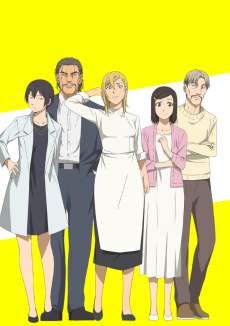 ANIME ComedyNami yo Kiitekure
ANIME ComedyNami yo Kiitekure
SCORE
- (3.5/5)
TRAILER
MORE INFO
Ended inMarch 26, 2025
Main Studio Studio Bind
Trending Level 2
Favorited by 184 Users
Hashtag #花修羅

